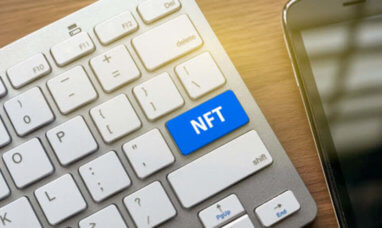Retail investing requires a retail broker, and each broker offers different services, fees, software, markets, and information. If you’ve already chosen a retail broker, and then subsequently found another broker that offers better or different services, moving your investments around is not too difficult.
Many of the most popular brokers have eliminated commissions on trades, and other brokers are following suit. If your broker takes a commission, you may be inclined to transfer your assets to a broker who doesn’t. Outside of commissions, there are many other fee structures that may be more favorable for your investing.
Additionally, if you’d like to access direct stock plans that are only offered by brokerage firms, advanced trading software, a wider variety of asset classes, or retail investment advisors, then a transfer may be a good way to switch brokers.
This is done through an Automated Customer Account Transfer or ACAT.
How Does an ACAT Work?
An ACAT, or in-kind transfer, is a full transfer of an investment account from one broker-dealer to another. Most basic assets such as bonds, cash, and derivatives can easily be transferred between broker-dealers through this automated system.
The transfer itself takes about a week, but it can take longer depending on the factors involved. If you choose to transfer assets to a non-broker-dealer or transfer assets on behalf of someone who requires a legal guardian, then the transfer will take longer.
Some institutions don’t take fees from the transfer, but some do. It’s important to talk to both broker-dealers and get information on the terms of the transfer and possible costs that might be incurred.
Additionally, assets not offered by the new broker-dealer must be sold. This should not be a problem if you hold mostly traditional assets that are widely available through most brokers. This includes stocks, bonds, cash, and investment funds available to the public.
It’s important to talk to your broker and find out which assets can be transferred.
How Can I Make an ACAT?
Before you do anything, find a new broker and research any available public information on ACAT transfers. If public information is lacking, reach out directly as a prospective customer to get more details.
Once you’ve found your broker and sorted out the details on the transfer, get a recent, up-to-date statement on your existing account. The information in this statement will be provided to the new broker in order to facilitate the transfer.
Next, you’ll fill out a Transfer Initiation Form or TIF. Your broker can provide this form and walk you through the process of the transfer. Your existing broker is the delivery firm and the new broker will be the receiving firm.
You can choose to do a full transfer or a partial transfer. If you only want to transfer a select portion of assets, for whatever reason, it is possible to only transfer a portion of your portfolio to the receiving firm. This can be useful for brokers that specialize in specific investment assets.
What Are the Fees Involved?
Not all brokers charge fees for transfer, but the delivery firm will often charge a transfer fee for the service. However, the receiving firm may offer reimbursement for transfer fees, which are expected to be around $100.
Again, every broker is different, whether they are delivering or receiving. This is why it’s important to talk to both firms and get additional details on the costs, time, and process of performing an in-kind ACAT transfer.
Should I Save Records of the Transfer?
Yes, it’s important to save records of the transfer and the statement from the delivering account for tax reasons and financial accountability. This especially applies if you are transferring a tax-free retirement account like a Roth IRA, as this information may be useful later when withdrawing your investments.
Why Switch Brokers?
There are several reasons why someone would want to switch between brokers. The most obvious reason is to lower or eliminate the fees associated with your existing broker. However, there are other reasons why an ACAT may be the right choice for you.
Commission Fees
The most substantial fees, especially for active investors, are commission fees. These are fees that the broker collects on every single transaction. If you buy or sell shares, your broker may collect a small percentage of the transaction as a commission fee.
As of writing, almost all of the most popular retail broker-dealers have eliminated commission fees. However, your current broker may still be charging a commission, so you can avoid these costs by transferring your investment to a receiving account without commission.
Fund Fees
For investors in mutual funds, a number of fees are required by fund managers during the purchase and ongoing operation of the fund. This includes fees for buying equity to the fund as well as fees of managing the fund and paying the fund employees.
Some brokers offer low fees on mutual fund investments, including one-time transaction costs when making your initial investment. If you want to avoid transaction fees on your mutual fund investments, an ACAT can be a useful way to move to a low-fee broker.
Access to Assets
Not all retail brokers offer the same assets for sale. Some brokers are more focused on equity and stock investments, some are focused on more obscure assets like commodity futures and uncommon currency pairs, and some offer an advanced range of derivatives.
If you would like to finance your assets or access more opportunities while managing your primary investments, an in-kind transfer can help you move your investments and access more choices in more markets.
Investment Software
One of the biggest factors for choosing a retail broker-dealer is the proprietary software included for clients. Some retail brokers offer a wide range of proprietary investment software, including trading interfaces and access to programmable APIs for automated trading.
If you prefer the software platform of a different broker, or you require a broker that offers certain software features, then an ACAT transfer can help you migrate your assets to that broker. If your delivering broker offers more tools than you need and collects fees for this service, you can transfer your assets to a more simplified broker with lower fees.
Featured Image: Twenty20








